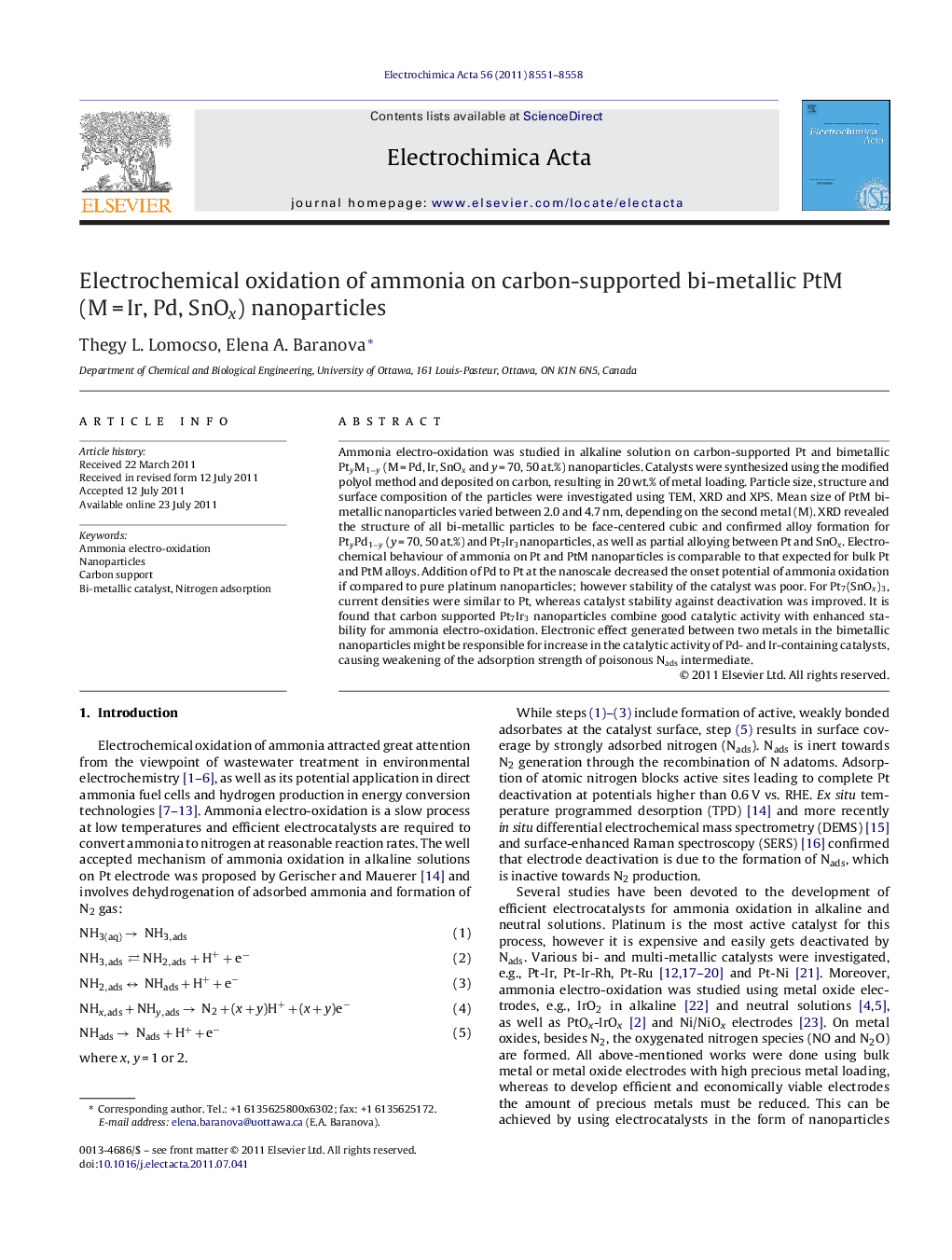| Article ID | Journal | Published Year | Pages | File Type |
|---|---|---|---|---|
| 189232 | Electrochimica Acta | 2011 | 8 Pages |
Ammonia electro-oxidation was studied in alkaline solution on carbon-supported Pt and bimetallic PtyM1−y (M = Pd, Ir, SnOx and y = 70, 50 at.%) nanoparticles. Catalysts were synthesized using the modified polyol method and deposited on carbon, resulting in 20 wt.% of metal loading. Particle size, structure and surface composition of the particles were investigated using TEM, XRD and XPS. Mean size of PtM bi-metallic nanoparticles varied between 2.0 and 4.7 nm, depending on the second metal (M). XRD revealed the structure of all bi-metallic particles to be face-centered cubic and confirmed alloy formation for PtyPd1−y (y = 70, 50 at.%) and Pt7Ir3nanoparticles, as well as partial alloying between Pt and SnOx. Electrochemical behaviour of ammonia on Pt and PtM nanoparticles is comparable to that expected for bulk Pt and PtM alloys. Addition of Pd to Pt at the nanoscale decreased the onset potential of ammonia oxidation if compared to pure platinum nanoparticles; however stability of the catalyst was poor. For Pt7(SnOx)3, current densities were similar to Pt, whereas catalyst stability against deactivation was improved. It is found that carbon supported Pt7Ir3 nanoparticles combine good catalytic activity with enhanced stability for ammonia electro-oxidation. Electronic effect generated between two metals in the bimetallic nanoparticles might be responsible for increase in the catalytic activity of Pd- and Ir-containing catalysts, causing weakening of the adsorption strength of poisonous Nads intermediate.
► Oxidation of NH3 is investigated on carbon-supported Pt and PtM (M = Pd, Ir, SnOx) nanoparticles. ► Carbon supported PtPd and PtIr nanoparticles show higher catalytic activity if compared to Pt nanocatalyst. ► Pt7Ir3 nanoparticles combine good catalytic activity and enhanced stability for NH3 oxidation. ► Electronic effect between two metals in PtIr is responsible for increase in the catalytic activity.
